Over the course of the past few months the team at OPIN's Automotive Lab in cooperation with the team at COVESA Global finalized the work of aligning their respective data standards facilitating the consumption of data generated by connected vehicles. Over the course of almost 10 months, technical and business use cases were discussed at length. As a result, OPIN's Motor insurance data model has been complimented with more than 80 new data properties encompassing dynamic, semi-dynamic and static signals.
This work has been documented and published as a set of two documents. The first is titled 'OPIN Enabled Mobility Use Cases' and the second is guidance document on logical composition of end to end technology system and the boundaries of responsibilities, titled 'Motor Insurance Technical POC and Implementation'.
During open discussions between the teams at OPIN's Legal & Regulatory Lab and the Automotive Lab, a range of questions and concerns were raised by the Legal & Regulatory team following the publication of the aforementioned two documents.
Those teams include practicing partner-level lawyers, platform architecture experts and data engineers. Together, and over the course of several months, a comprehensive document has been prepared to clarify and elaborate on a set of 14 probing questions.
Ultimately, this document aims to raise awareness of legal and regulatory questions that may arise in the context of mobility related projects. The answers provided are based on either European/local EU Member State legislation, international guidelines, or Brazilian law. Brazil indeed since December 2021 has adopted an Open Insurance framework which may serve as an inspiration for future frameworks in other jurisdictions. An overview of this framework is provided here.
The writing of this paper also coincided with the European Commission's publication of the proposed Data Act thus an additional section has been included to discuss its main provisions and provide our views.
